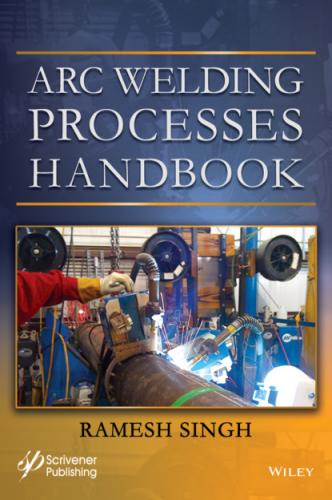For example, GTAW process is nearly all the material listed, but SMAW and SAW processes stops short, and not suitable for welding Copper and alloys, or Titanium and its alloys. Table 1.2 is the generic information, while the Table 1.3 is more specific with numbers and includes more process and varients. Similarly Brazing is possible for nearly all material listed but soldering is not. The Table 1.4 blow presents a matrix that shows the ability and limits of various arc welding processes, the last two columns of the table show the applicability scope of soldering and brazing processes.
The Table 1.5 below is borrowed from another book Applied Welding Engineering – Process, Codes and Standards. The table lists the electric arc process by the arc energy efficiency of each process. Note the highest efficiency of SAW process and the lowest in that of GTW process.
Table 1.2 Arc efficiency by welding process.
| Process | Arc efficiency | |
| 1 | SMAW | Intermediate |
| 2 | GTAW | Low |
| 3 | SAW | High |
1.8 Welding Procedures
A welding procedure is a statement of execution, a specific plan prepared by the welding contractor. The procedure details with listing of various variables associated with the proposed welding process giving an assurance that the resulting weld would guarantee that the required mechanical and metallurgical properties will be met. Any format of form may be used to develop a welding procedure giving essential details. Some international specifications especially addressing the welding requirements have developed a format for the purpose, AWS D1.1 has E-1 form for pre-qualified procedures, similarly ASME Section IX of Boiler and Pressure vessels code has a set of such forms for welding specifications, welding qualification records (PQRs) and welders’ qualification records, they are numbered as QW- 482, QW- 483 and QW 484 respectively. Other international standards for welding are EN ISO 15609-1, EN ISO 15609-2, EN ISO 15609-3, EN ISO 15609-4, EN ISO 15609-5, and EN ISO 15614. Till the last revision, the EN ISO 15614 had 12 parts dealing with specific topics on welding various materials like Steel, Aluminum, Cast Iron, Titanium, Copper etc.
The plan details all essential and non-essential variables that are important to achieve the quality of weld. These variables are welding process specific. Some of these variables are discussed in this book. In ASME section IX, these variables are listed specific to the particular welding process, they are subdivided into essential, supplementary essential, and nonessential variables. However, these variables are not specific to ASME but are in general agreement with welding technology.
Table 1.3 Shows the arc efficiency factors for various commonly used arc welding processes.
| Welding process | Arc efficiency factor η | |
| Range | Mean | |
| Submerged Arc Welding | 0.91 - 0.99 | 0.95 |
| Shielded Metal Arc Welding | 0.66 - 0.85 | 0.80 |
| Gas Metal Arc Welding (CO2 Steel) | 0.75 - 0.93 | 0.85 |
| Gas Metal Arc Welding (Ar Steel) | 0.66 - 0.70 | 0.70 |
| Gas Tungsten Arc Welding (Ar Steel) | 0.25 - 0.75 | 0.40 |
| Gas Tungsten Arc Welding (Ar Aluminum) | 0.22 - 0.46 | 0.40 |
| Gas Tungsten Arc Welding (He Aluminum) | 0.55 - 0.80 | 0.60 |
Table 1.4 Indicates general limits of joining/welding processes that apply to the material listed in left column.
| Material | Welding processes | Other joining processes | ||||||||||||||
| SMAW | SAW | GMAW | FCAW | GTAW | PAW | ESW | EGW | RW | OFW | DFW | FRW | EBW | LBW | B | S | |
| Carbon Steel | x | x | x | x | x | x | x | x | x | x | x | x | x | x | ||
| Low alloy steel | x | x | x | x | x | x | x | x | x | x | x | x | x | |||
| Stainless steel | x | x | x | x | x | x | x | x | x |
| ||||||
